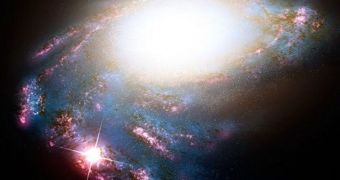For all their tremendous uses in the fields of astronomy and astrophysics, Type Ia supernova events are still surrounded in mystery, especially when it comes to figuring out its origins. They are being used as reference points everyday, yet researchers have no idea what produces them.
One of the things that make Type Ia supernovae so important is the fact that they brighten and dim according to clearly-established rules. Over the years, experts learned how to use them as stellar beacons and standard candles.
This means that they were taken as reference points in determining a variety of parameters governing the surrounding Universe. Some of the discoveries made based on their study include the discovery of dark matter and dark energy, as well as the expansion of the Universe.
All of these important theories literally changes the way we looked at the Cosmos entirely. Suddenly, a lot of things made more sense, and some made none whatsoever. But science has now reached a point where uncertainties related to these cosmic events can no longer be tolerated.
“The question of what causes a Type Ia supernova is one of the great unsolved mysteries in astronomy,” explains Harvard-Smithsonian Center for Astrophysics (CfA) expert Rosanne Di Stefano.
One of the leading theories meant to explain the origin of white dwarfs says that the explosions are produced from white dwarfs, helium-burning stellar remnants that blew up at the end of their life cycle.
In order for that to happen, the thinking goes, the star needs to accumulate mass continuously, until it reaches a tipping point beyond which it can no longer sustain its own mass. When this point is reached, the star blows up, producing the Type Ia supernova event, Daily Galaxy reports.
But this knowledge cannot apparently help investigators discover the precursors to these explosions. In other words, experts cannot find the white dwarfs that are about to blow up.
“We must devise new methods to search for the elusive progenitors of Type Ia supernovae,” Di Stefano explains. These objects should appear as super-soft X-ray sources in telescope studies, and yet they do not.
The missing white dwarfs make researchers wonder even more on where these supernova events may originate. Maybe tracking down some of these stellar remnants will clear up some mysteries related to Type Ia supernova events.

 14 DAY TRIAL //
14 DAY TRIAL //